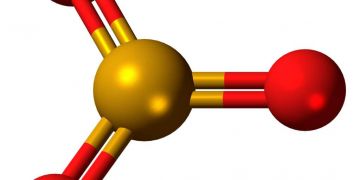Selenium has important antioxidant properties and may play a role in cancer prevention, cardiovascular health, thyroid regulation, and improved cognitive function. Although the claims of its health benefits have not yet been adequately proven, research into selenium's effectiveness is ongoing.
Health Benefits of Selenium
Selenium is thought to have a variety of health benefits. It helps to promote metabolic function, particularly of the thyroid. Due to its strong antioxidant and anti-inflammatory properties, the mineral supplement holds promise for increasing cardiovascular health and for fighting cancer by helping to destroy free radical cells. Our body also uses selenium to produce selenoproteins, which work to reduce inflammation at the cellular level.
In lambs and calves, lack of selenium and/or Vitamin E causes White Muscle Disease (Nutritional muscular dystrophy), where the animals drastically lose muscle tone and find it hard to even stand up. Their muscles are described as turning "jelly-like". Stress on the animals seems to greatly increase severity of the condition. The symptoms are reversed when selenium/Vitamin E supplementation is given. Although this is a condition found in animals rather than humans, it does show how large an effect from lack of selenium can have in mammals.
Selenium Research
It should be noted that when studies of selenium's efficacy are examined, the evidence is conflicting. For instance, a study published in The Cochrane Library in early 2013 indicates that selenium supplementation does not reduce a person's risk of heart disease. In fact, there is evidence to suggest that too much selenium is correlated with a greater risk of type 2 diabetes (Karen Rees, Louise Hartley, Camilla Day, Nadine Flowers, Aileen Clarke, Saverio Stranges. Selenium supplementation for the primary prevention of cardiovascular disease. The Cochrane Library, 2013). An earlier study, however, suggests that selenium can help decrease the risk of diabetes. Inconclusive results have likewise been shown when researchers attempt to discover whether selenium helps to kill cancer cells.
One way to account for these conflicting results is suggested by a recent study that isolates different forms of selenium and tests how each one performed independently. The results show that of the two forms -- SeMet and MeSeCys -- MeSeCys destroyed more lung cancer cells than SeMet (Claire M. Weekley, Jade B. Aitken, Stefan Vogt, Lydia A. Finney, David J. Paterson, Martin D. de Jonge, Daryl L. Howard, Ian F. Musgrave, Hugh H. Harris. Uptake, Distribution, and Speciation of Selenoamino Acids by Human Cancer Cells: X-ray Absorption and Fluorescence Methods. Biochemistry, 2011; 50 (10): 1641). This study indicates that it may be possible to isolate an effective form of the mineral that will achieve more uniform results.
Selenium in the Food Chain
The concentration of Selenium in the ground soil varies greatly in different regions of the world. Because plant foods, such as grain, are further down on the food chain, their concentration of selenium is more dependent on soil content than are animal foods since animals' bodies regulate the amount of the mineral in their tissues to achieve a relatively stable level. Thus, populations that eat a mostly plant-based diet in regions with low levels of selenium in the soil, such as mainland China, will have less access to selenium from their diets alone.
Food Sources of Selenium
Foods with the greatest concentration of selenium are meat, seafood, grain, and eggs. Brazil nuts have the greatest amount of the mineral contained in any single food, with almost 100 mcg in a single nut.
Other good sources are:
Yellowfin tuna Halibut Ham Shrimp Enriched macaroni Beef, especially liver Brown rice Eggs
Selenium RDA
As researchers continue their testing, they may well determine that the mineral has powerful cancer-fighting properties and other health benefits. For now, however, there seems to be no benefit to taking the mineral in excess of the current RDA.
The recommended dietary allowance (RDA) of selenium for adult men and women is 55 micrograms (mcg) a day. To put that into perspective, Americans' average daily selenium intake, from food alone, is 108.5 mcg (U.S. Department of Agriculture, Agricultural Research Service. What We Eat in America, 2009-2010). A combination of high levels of selenium in North American soil and a diet containing large amounts of animal protein mean that the risk of selenium deficiency among Americans is extremely low.
Selenium may be taken with other vitamins and minerals without harming its absorption process. Organic selenium, which is incorporated in amino acids such as methionine or cysteine (selenoproteins), is more readily absorbed into the human body than non-organic forms of the mineral. Customers should look for organic selenium produced in yeast for best results.
Selenium Overdose
Selenium overdose has been observed in regions with a high concentration of selenium in the ground soil. Selenosis is caused by excessive intake of selenium. The symptoms of selenosis are hair loss, brittle nails, fatigue, and irritability. To avoid getting too much selenium, individuals should not take more than 400 mcg of the supplement a day.





